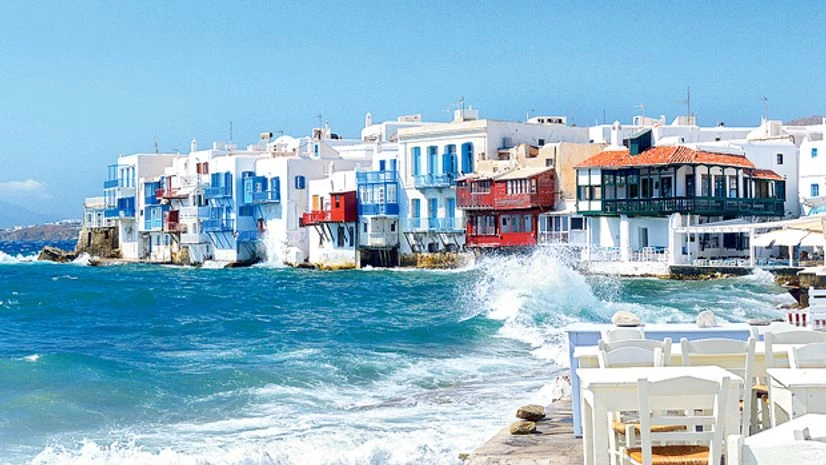They say this is where light was born. A fine place to have forgotten to bring one’s sunglasses to, I think, squinting in the blinding Hellenic sun. What is it going to be like, I wonder, to explore Delos, an uninhabited island with ruins older than history itself — on the same day as I reach Mykonos, the hedonistic pleasure capital of the world? It seems inconceivable that the two islands are barely a few kilometres apart.
At the centre of the Cyclades, Delos is one of the most important mythological, historical and archaeological sites in a country which, like India, is bursting with them. In myth, Delos is the birthplace of the twins, Apollo, god of light, and Artemis, goddess of the moon. This made the island so sacred that in ancient times, no mortal was allowed to be born, or die, on Delos. Presumably, they had other islands for those sorts of things.
Delos is seriously the sunniest place I’ve seen, I muse at the ruins of a third-century temple of Zeus and Athena. The forgotten sunglasses continue to rankle. One can, the guide tells us, hike to the top of Mount Kynthos towering behind, the highest point in Delos, for some panoramic views. However, while the antiquities around make the present passage of time pale in comparison, we’re all on a clock in Delos. Overnight stays are forbidden here and boat schedules allow a maximum of four hours to explore the island. So, overcoming the impulse to hike up Mount Kynthos, the group moves at a fast trot to the Terrace of the Lions, magnificent in contrast to the barrenness of the surroundings and the azure Aegean Sea. Five of the original nine lions repose in the scruffy museum on the island, while their replicas guard the Sacred Lake, birthplace of Apollo and Artemis. Next, we walk through the remains of the town, where two- to five-foot walls of houses and shops stand on either side of stone-paved roads that have withstood the millennia remarkably. The sight of the famous mosaic floor depicting a dolphin swimming around an anchor in a merchant’s house is an evocative reminder of the time when Delos, despite its limited water, stony terrain and trees, rose to become a buzzing, cosmopolitan port from the 3rd century BCE to the Paleochristian era.
Soon, it’s time to leave for Mykonos, the cosmopolitan Mediterranean port of today. Named after Apollo’s grandson and mythic hero Mykons, the island is believed to have been the site of the great battle between Zeus and the Titans. Some say the large boulders dotting its landscape are their petrified testicles (hence the slang term “stones”, by the way). It’s not a pretty legend for a place that is so picture-postcard perfect, I muse, looking at its trademark windmills and white sugarcube houses overgrown with flowering bougainvillea.
Greece
Also Read
As I walk through its cobbled streets, pretty houses and shops on either side, I wonder of Delos once looked like this. Was it as heedless of its environs in its pursuit of religion and trade? As I stand atop a hill where five windmills wave lazily in the wind, it strikes me that Delos and Mykonos aren’t as different as I’d envisaged — stripped to their bare bones, the two islands may be quite similar after all.

)
